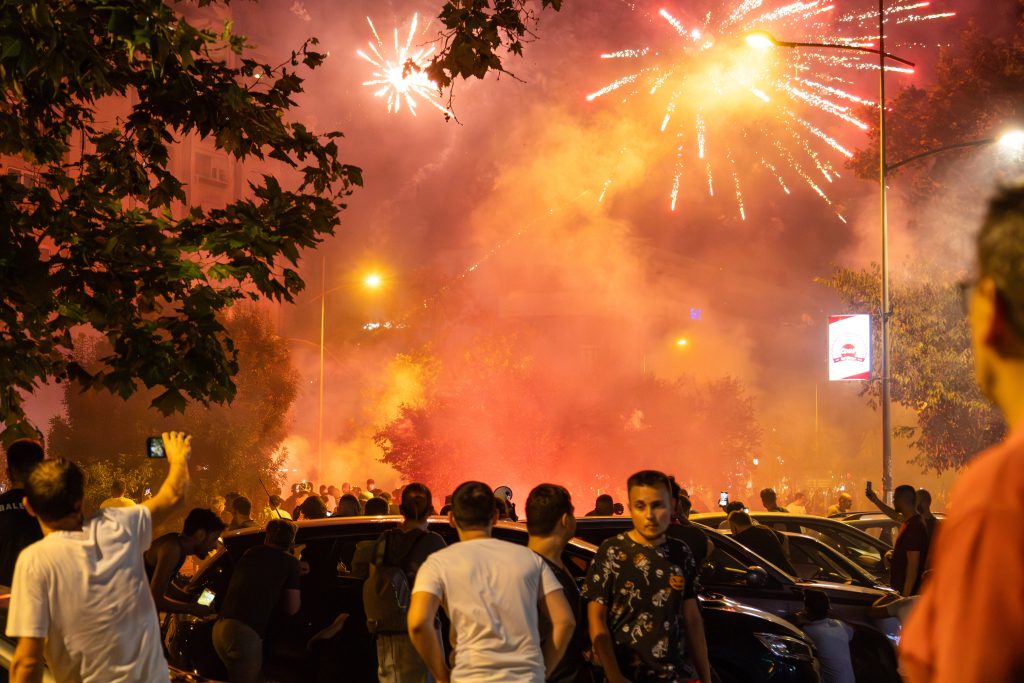Students involved in the PMF protest blockade announced on social media that their laboratory analysis confirmed that the police used both gases during the protest.
CN gas was first created in Germany in 1871, and Japan used it against Chinese people during its occupation of the country in the 1930s. Although similar to CS gas, CN can be dangerous to the eyes, cause corneal damage, and affect the lungs due to its higher toxicity. It is significantly more dangerous, which is why it has been banned in almost all countries. CS acts faster, triggers a stronger but short-lived reaction, and is considered less harmful to long-term health.
Because of these health risks, CN was phased out in the 1970s and completely replaced by the milder CS gas, which became the standard in many countries for police and military operations.
The protesting students wrote: “Our message is clear: the use of CN gas is not a means of control but amounts to poisoning your own citizens.”
For this reason, students are demanding an investigation and criminal responsibility for “those who allowed the use of such a dangerous gas.” They have advised citizens and police officers to use masks with filters, as only these provide protection against CN and CS gases.
“To the Ministry of Interior and all relevant authorities, we say that we are ready to submit some of our collected samples for further analysis. We are not afraid of the truth and stand by our results. Will you finally show courage and transparency, or will you continue to hide what the public has the right to know?” the students asked in their post.
Regarding the methodology of their analysis, students say they collected several dozen unmarked canisters that were deployed on September 5 in Novi Sad. They note that some of the canisters clearly showed signs that the labels were removed. The students added that all analyses were conducted using the same method applied in all accredited laboratories worldwide, employing gas chromatography with mass spectrometry (GC-MS).
Police Deny the Students’ Claims
The Ministry of Interior (MUP) officially denied the students’ claims regarding the use of CN gas.
“The police do not possess such chemical agents, and therefore it could not have been used,” they said.
They also added that the materials used by the police are strictly regulated, approved through relevant governing bodies, and are not harmful to human health or the environment when used as prescribed.
“The police only have the chemical projectile labeled MN-01, which contains CS gas, and the hand-held chemical grenade labeled RB-N2, which also contains CS gas. We emphasize that these materials are used exclusively by police officers specially trained for their use,” the MUP noted.
They further stated that these materials are on the official list of approved chemical agents and are used in accordance with local and international regulations.
“Making unfounded claims about the alleged use of dangerous or prohibited chemical agents constitutes gross misinformation, causes unwarranted panic, and undermines the police’s reputation. The Ministry of Interior will continue to conduct all its activities responsibly, professionally, and in accordance with the law, taking care of the safety of all citizens,” the MUP stated.
This incident is reminiscent of the March 15 protest, during which police also used an “unknown weapon” which resembled a sound cannon, according to eyewitness accounts from dozens of protestors.
For months, footage from the protest was analyzed, with the police repeatedly denying any possession of sonic weapons. Later, it was revealed that they did have one, though it was allegedly in storage.
Today, the sound cannon case has almost been forgotten, and it remains to be seen how the police’s seemingly malicious will further unfold.
M.B., A.M.




